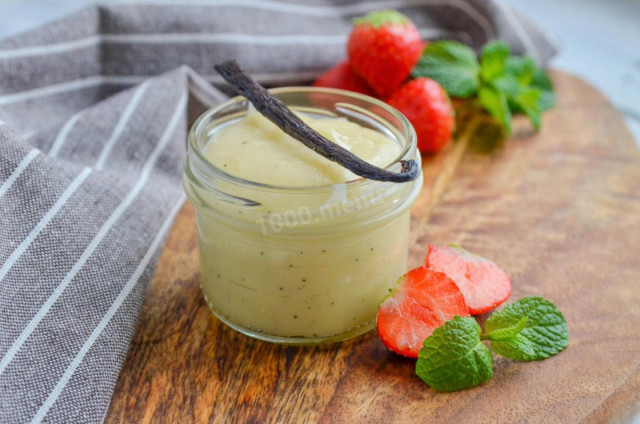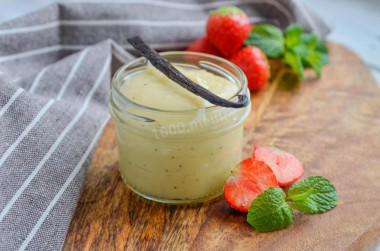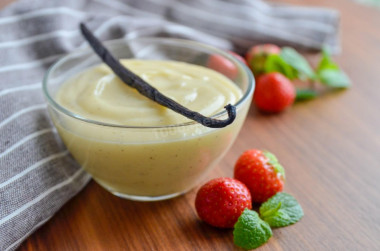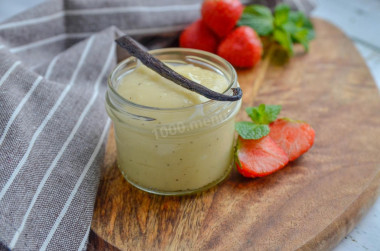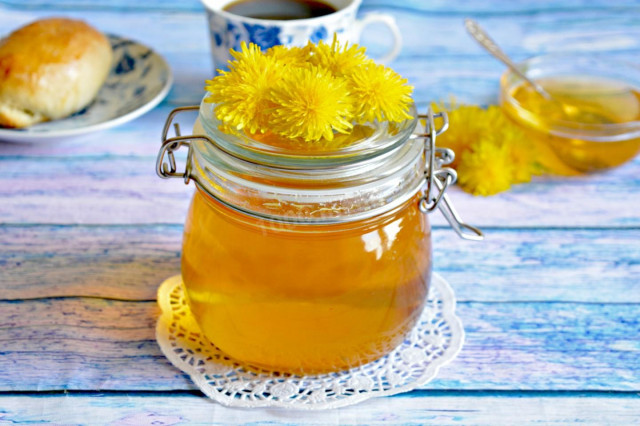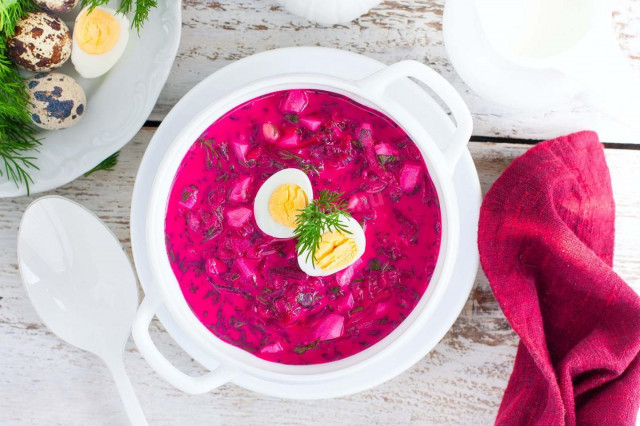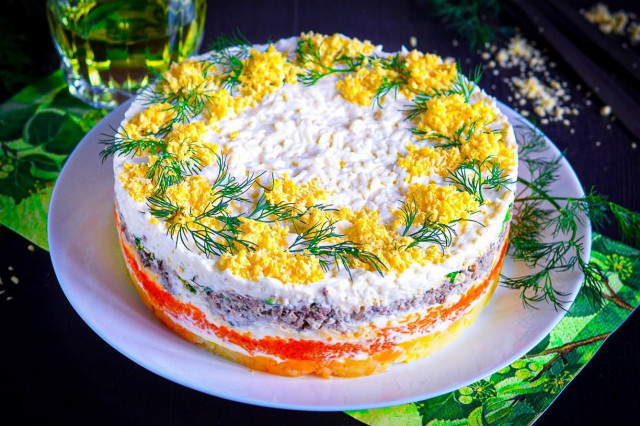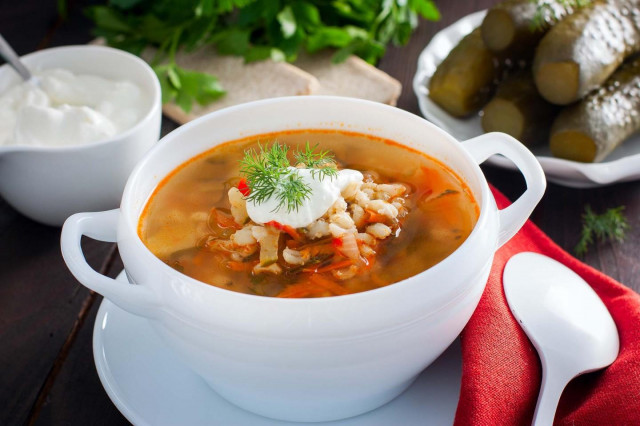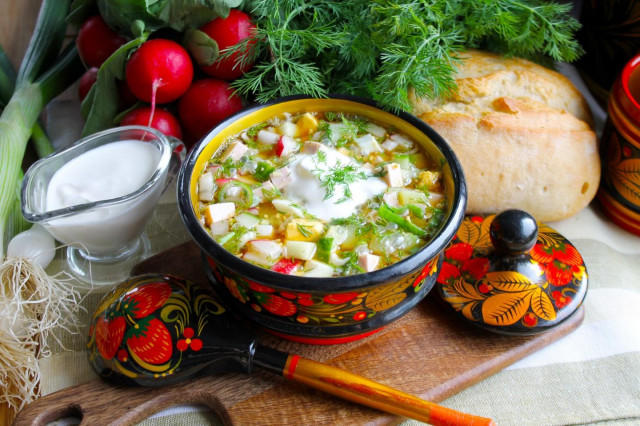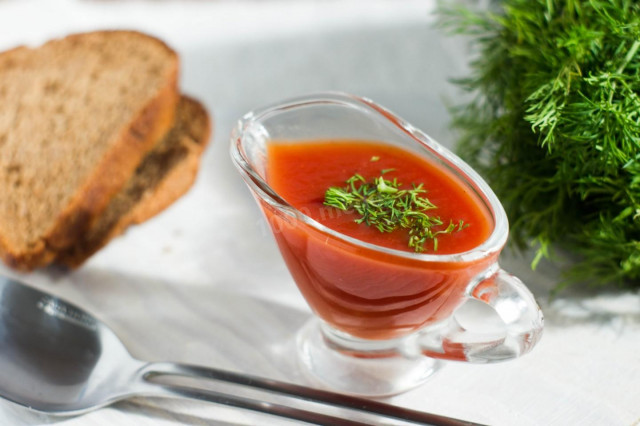Composition / ingredients
Step-by-step cooking
Step 1:
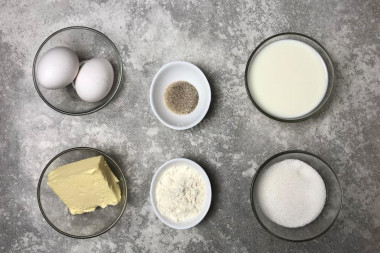
How to make a classic custard? Prepare the products for him. The amount of sugar given is average, you can put from 170 to 230 grams. It depends on your taste preferences, as well as on what you plan to serve the cream with. Take the highest quality butter, with it the cream will turn out thick and creamy. From this amount of products, you will get a portion of cream sufficient for one cake. I cooked at the rate of two eggs.
Step 2:
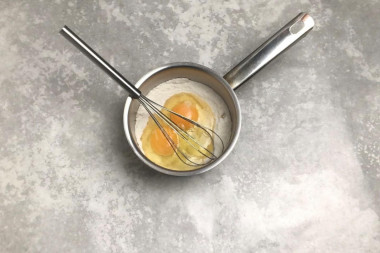
Take a saucepan with a thick bottom. This is important, since the custard base will contain eggs, which may burn during cooking. The thick bottom heats up gradually and evenly, which will prevent burning. Pour plain sugar, vanilla and flour into a saucepan. Mix the dry products. Break the eggs in them.
Step 3:
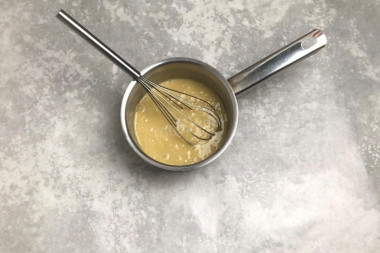
Whisk eggs with sugar and flour.
Step 4:
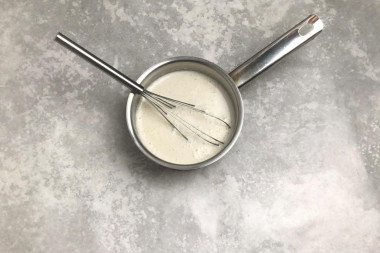
Gradually, in a thin trickle, with constant stirring, pour in the milk.
Step 5:
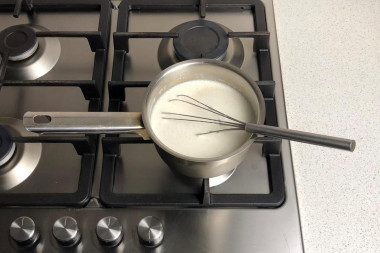
Put the saucepan on a small fire. If you have a regular ladle or do not have enough experience, then cook the cream in a water bath. This will increase the cooking time, but will eliminate the burning and curdling of the cream. I cooked the cream without a bath. A little advice - make the fire minimal and stir the cream with a whisk all the time, then it will definitely turn out.
Step 6:
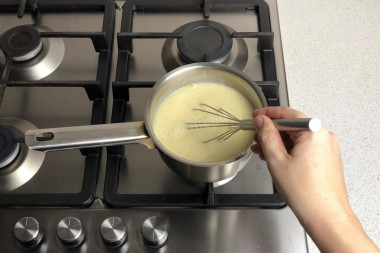
Cook the cream with constant stirring until boiling. It will thicken a lot and start "puffing" big bubbles. Immediately turn off the heat and remove the cream from the heat.
Step 7:
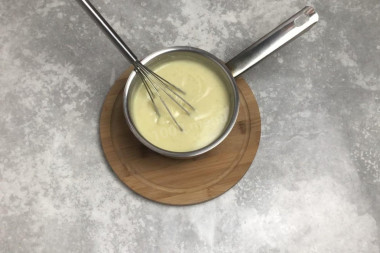
Leave the hot cream on for 5 minutes, and then put the softened butter in it. Stir the cream until smooth. Since the cream is still hot, the butter will melt in it instantly. the cream will become a little liquid, it's not scary, after cooling it will thicken.
Step 8:
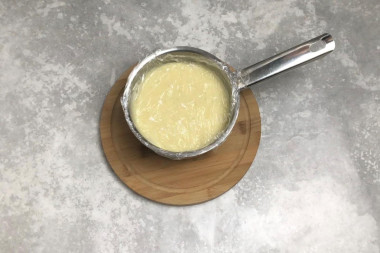
Leave the cream to cool at room temperature. Be sure to cover the cream with cling film "butt ", that is, so that it lies directly on the surface. This is important, because when cooling down, a thick crust forms on the cream. The film will prevent this. Put the cooled cream in the refrigerator for at least 2 hours. It will cool down and thicken completely. If you use cream for the cake, then smear the cakes with still warm cream, and only then put the cake in the refrigerator.
Custard is my favorite cream. It is the most gentle, not cloying, perfectly impregnates the cake cakes. For the filling of the cakes, I would add more butter. And this cream is very tasty to eat just like that.
How do I know if an egg is fresh? Break it into a separate container. First of all, there should be no unpleasant smell. The protein of fresh eggs will be transparent and clean. The yolk should not spread and will be shiny, convex, homogeneous.
Be sure to wash the eggs before use, as even the seemingly clean shell may contain harmful bacteria. It is best to use food detergents and a brush.
Caloric content of the products possible in the composition of the dish
- Whole cow's milk - 68 kcal/100g
- Milk 3.5% fat content - 64 kcal/100g
- Milk 3.2% fat content - 60 kcal/100g
- Milk 1.5% fat content - 47 kcal/100g
- Concentrated milk 7.5% fat content - 140 kcal/100g
- Milk 2.5% fat content - 54 kcal/100g
- Chicken egg - 157 kcal/100g
- Egg white - 45 kcal/100g
- Egg powder - 542 kcal/100g
- Egg yolk - 352 kcal/100g
- Ostrich egg - 118 kcal/100g
- Whole durum wheat flour fortified - 333 kcal/100g
- Whole durum wheat flour, universal - 364 kcal/100g
- Flour krupchatka - 348 kcal/100g
- Flour - 325 kcal/100g
- Granulated sugar - 398 kcal/100g
- Sugar - 398 kcal/100g
- Butter 82% - 734 kcal/100g
- Amateur unsalted butter - 709 kcal/100g
- Unsalted peasant butter - 661 kcal/100g
- Peasant salted butter - 652 kcal/100g
- Melted butter - 869 kcal/100g
- Vanilla sugar - 379 kcal/100g

